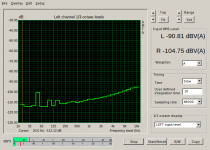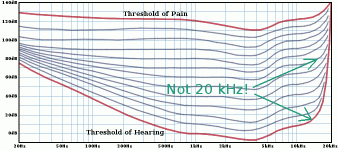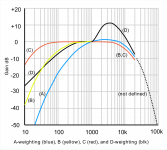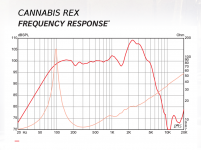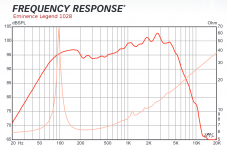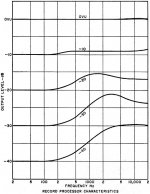Surely that shouldn't apply to every guitar, and every G-string, that has crossed your path. They can't all have the same intonation problem.That sounds like an intonation problem.
Are we talking about "dull tone", or "less loud than other strings"?Some pickups have adjustable pole pieces to adjust output of individual strings.
If you're talking about the Earvana nut, part of the installation process is to move the nut forward (towards the bridge) by shaving a precisely specified amount of wood off the end of the neck....compensated nut...messes with the tuning in the first position, since it increases the distance from the nut to those first few frets drastically.
This shortens the distance to the first fret, and compensates for the recesses in the nut which increase the distance to that same fret. However all the recesses are not identical, so you end up with intonation compensation at the nut end.
The fact that skilled and precise woodwork is required to install the Earvana nut is one of the criticisms that's been levelled at it; most people will need a luthier or guitar tech to do it for them, it's not a DIY proposition.
There is an alternative type of compensated nut which has a "shelf" that overhangs the very tip of the fretboard, cut to different thicknesses under different strings. This type of compensated nut does indeed shorten the distance to the first fret - but only on those strings where this is required to bring them into intonation.
I've had this happen with multiple inexpensive Chinese-made guitars. I think their CNC templates are a bit off, with the bridge consistently being mounted about three millimetres too close to the nut. If you lower the action, you run out of room to correct the intonation. In some cases, even reversing the saddle blocks doesn't provide enough room to intonate some of the strings.I had to reverse the bridge blocks on those strings to lengthen the other end so they be intonated. I had run out of room....
One one cheap "S-type" guitar, I fixed this by removing the screw-on neck (not bolt-on as widely misused), shaping and gluing a roughly 3mm thick shim on the end of the neck where it sits in the neck pocket, drilling out and filling the screw holes in the neck pocket with bits of dowel, and then re-installing the neck, making the scale length 3 mm longer, and giving me enough room to intonate all the strings at the bridge.
-Gnobuddy
No, slaves have no choice!You are enslaved to standard tuning patterns.
I choose to avoid alternate tunings where they are unnecessary, or when (in my opinion) the reward for doing so is too small. If the song is really great, and there's no other way to get there, I'll retune my guitar. Otherwise, no.
Frequently there is no downside at all, as I can simply work out a way to play the original altered-tuning lick in standard tuning.
I can't help but note that guitar jazz greats can find any chord and any sound they want on a guitar in standard tuning, while guitar novices like Joni Mitchell depended on multiple different alternate tunings to conjure up a different sounds.
I am neither guitar great nor guitar novice, but my goal is to move as far as I can towards the greats, until infirmity, senility, or death puts a permanent stop to my progress.
Do you also switch the gas and brake pedals of your car back and forth now and then for fun, and then drive in traffic?I will mess with the DADGAD and go back if "necessary".
The "alternate tuning" of bass guitar still gives me headaches; my brain and fingers and ears and muscle-memory all expect a major-third interval from third to second string, but on a bass, they're all perfect fourths. I play more clams on bass when moving from 2nd string to 3rd string than anywhere else on the instrument.
-Gnobuddy
He was talking about a few cents to make the chords sound good. Some musicians tune up together up the neck like the second position to insure critical notes sound properly when they play.Surely that shouldn't apply to every guitar, and every G-string, that has crossed your path. They can't all have the same intonation problem.
Both.Are we talking about "dull tone", or "less loud than other strings"?
Axemasters Brass Compensated AxeMasters COMPENSATED 1/4" Brass Nut for EPIPHONE Guitar - Earvana Alternate | eBayIf you're talking about the Earvana nut, part of the installation process is to move the nut forward (towards the bridge) by shaving a precisely specified amount of wood off the end of the neck.
I'm no lawyer, but that looks like a rip-off of older-design Earvana nuts to me. I wonder if Earvana's patent expired?Axemasters Brass Compensated AxeMasters COMPENSATED 1/4" Brass Nut for EPIPHONE Guitar - Earvana Alternate | eBay
-Gnobuddy
Last edited:
It won't break like a plastic one. It may improve in some areas and hurt in others. None of the Greats of Ole used these since they didn't exist, to the best of my knowledge.I'm curious what happens with the Axemaster's nut, which uses the older Earvana approach, but is apparently installed without shaving the fretboard end. At first sight, I would expect that would make intonation worse, not better.
-Gnobuddy
I hope it isn't the same kind of situation like those speaker line "filters". You know, the ones that claimed to filter out all sorts of noise that didn't have the energy to excite a gnat, let alone a moving coil at low resistance.
Have you run across these (True Temperament frets)?: True Temperament - .strandberg* Guitars Rest of WorldIt may improve in some areas and hurt in others.
The idea is to compensate every note on the entire fretboard, which requires a different fret position under every string, so the frets aren't straight any more.
When this product was launched some years ago, I heard a few online audio clips played on a guitar with the weird-looking True Temperament frets. The change was dramatic - most of the roughness that's a normal part of electric guitar tone was gone, replaced by eerily perfect-sounding chords and scales and intervals. About as far as you can get from Leo Fenders always-out-of-tune original Telecaster design, with its three-barrel bridge.
I'd love to learn more about the manufacturing process for these True Temperament necks. How do you make fret-slots in those weird shapes, and how do you bend the frets to match? CNC, amazing craftsmanship, or both?
Still, the product appears to do what it says on the tin, though, as always, there are downsides. Among them, the subsequent maintenance issues. It appears impossible to re-crown your frets. And what do you do if you need a re-fret? Buy a new guitar? Buy a new neck?
-Gnobuddy
Then it would be a piano. What would happen on a string bend? The expense is insane.....True Temperament frets.
The idea is to compensate every note on the entire fretboard, which requires a different fret position under every string, so the frets aren't straight any more.
-Gnobuddy
Back to the original issue was the G and subsequently, the questioning of the adjacent D. These are both at the center of the neck. This is too much of a coincidence, since the neck is fatter in the center. Oh, there is a slot there for the truss rod. There are three things, then, affecting these two center strings compared to the rest: the slot, the rod, and the neck thickness.
But some guitars are perfect out of the box. Must be the wood, and perhaps light gauge strings to some extent affecting some, especially the garbage imports. My intuition says ebony fret boards ameliorate this. In the Strat, a good, maple neck with real rosewood fret board.
Apparently piano tuning is weird. "Stretched tuning" is used to make them sound their best: Stretched tuning - WikipediaThen it would be a piano.
I don't think these guitars are sold to blues (and bluesy) players. Probably to prog rock guitarists and other similar types who play a lot of rapid weird scales and never, ever, bend a note. (Edit: I was wrong - the home page for True Temperament says that "...bending is not affected." )What would happen on a string bend?
For whatever it's worth, I've never had any noticeable trouble with either of those two strings, on any guitar....the G and..the adjacent D. These are both at the center of the neck.
The "B" string is a different kettle of fish entirely. It's the only string that always, always misbehaves, on every steel-string guitar, acoustic or electric. The B-string drives home the reason why equal temperament was developed in the first place, and also the fact that equal temperament is a compromise. All keys and chords sound a little "off", but none sounds absolutely awful.
I cannot tune the "B" string by ear, because whatever I do, some chords will sound bad - all I can do is pick which ones sound bad. So these days I just use my Snark, which sets the B string to sound slightly out of tune, and spreads that out-of-tune quality roughly equally between all the different chords in all the different keys. None of them sounds perfect, but at least, none of them sounds atrocious, either.
-Gnobuddy
Last edited:
Interesting. It's probably me, and again, I don't recall a real problem with the good axe that I mentioned.I cannot tune the "B" string by ear, because whatever I do, some chords will sound bad - all I can do is pick which ones sound bad. So these days I just use my Snark, which sets the B string to sound slightly out of tune, and spreads that out-of-tune quality roughly equally between all the different chords in all the different keys. None of them sounds perfect, but at least, none of them sounds atrocious, either.
-Gnobuddy
Thanks for the stretched tuning link. I was looking for that forever. I heard it yields a warmer sound. I read regular tuning is also called "square". Rod Elliot said something about tuning pianos by listening for beats. Says it takes a long time but worth it.
Incidentally, the opamp was blown by leaving out the 1u on the Rg leg. It only works for half-wave. I see the following schematic for a post opamp does not indicate any capacitors in the feedback circuit, just the G=100 resistor pair; The explanation the one brother proffered (waaaay back in this post) has not sunk in yet. Perhaps it had something to do with my low G=3 and the low rail voltage. Or is it esoteric knowledge all techs should know?
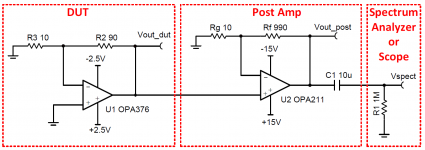
Hmm. Very odd. Leaving out that capacitor can sometimes have unwanted side effects, but blowing the op-amp is not one of them. I wonder if something else killed the op-amp?Incidentally, the opamp was blown by leaving out the 1u on the Rg leg. It only works for half-wave.
Op-amps inherently work all the way down to DC, zero Hertz. If you leave out that capacitor, the voltage gain at DC is the same as the voltage gain at AC. This has the side effect that the internal (DC) offset voltage of the op-amp is amplified by the same amount as the incoming AC signal.
This in turn will push the output quiescent voltage away from zero volts. If, and only if, the input offset of the op-amp is big enough, it can swing the output so far off centre that it starts to clip one half of the waveform, or even just stays stuck full high or full low.
But this is not a destructive situation for the op-amp - it's no different than a big peak input signal swinging the output all the way to its positive or negative limit.
Op-amps are frequently used in circuits where they do, indeed, need to operate all the way down to DC (for example, in a voltage regulator circuit.)
But if we're using an op-amp for audio, we do not need response to DC. Not only that, we do not want response to DC - all it does is create more noise, make the circuit sensitive to infrasonic signals, and maybe cause so much output offset that the circuit doesn't even work properly.
So in this situation, we add that capacitor in series with Rg. Voltage gain is 1 + (Rf/Rg); if Rg now includes a capacitor in series, the impedance of (Rg+cap) increases as frequency drops. That means the voltage gain starts to fall when the frequency drops low enough. "Low enough" means when Rg equals the capacitive reactance of that series cap.
By the time the frequency goes all the way to zero Hz, the cap's reactance is infinity, and the circuit's voltage gain is just unity (1). This means the output offset voltage is no bigger than the op-amps own input offset voltage - which is usually a few millivolts or less. We've killed two birds with one stone - we got rid of the DC offset, and we got rid of the infrasonic noise problems too.
I wasn't familiar with either of those op-amps, so I had to look up their datasheets....the following schematic for a post opamp does not indicate any capacitors in the feedback circuit, just the G=100 resistor pair...
View attachment 788741
The OPA376 has a spectacularly low input DC offset of 25 uV, worst case. Set for a voltage gain of x10, with no cap to roll that off at DC, worst-case output offset is still only ten times 25 uV, or a mere 250 uV. Only one-fourth of a millivolt!
The second op-amp (OPA211) has 125uV max input offset voltage. Worst case, that will add to the 250 uV offset from the preceding OPA376 stage. So we have a worst-case 375uV input offset, times a voltage gain of one hundred, for a worst-case output DC offset of 37500 uV, which is only 37.5 mV. Tiny, in other words.
So yes, that circuit will work fine, as long as you use the specified op-amps. Substitute a generic op-amp for the ultra-low-offset OPA376, though, and the circuit will likely stop working altogether.
-Gnobuddy
The 376 was the DUT for noise. There is no input. The second has G=100 so if the noise of the DUT is below the noise floor of the scope, it will now show up. The Boss MT-2 probably wouldn't need this.....Hmm. Very odd. Leaving out that capacitor can sometimes have unwanted side effects, but blowing the op-amp is not one of them. I wonder if something else killed the op-amp?....
So yes, that circuit will work fine, as long as you use the specified op-amps. Substitute a generic op-amp for the ultra-low-offset OPA376, though, and the circuit will likely stop working altogether.
-Gnobuddy
Someday I would like to set up a jig to test specifically for noise. I envision creating the entire circuit how it will be ultimately used, and roll parts from there until there is "no" noise.
Thanks for the explanation.
The amplified noise you see on your scope does not necessarily correlate to the noise you will hear. This is due to the fact that your scope has 100x more bandwidth than your ears. To achieve some comparable numbers you should better use a soundcard and a software like ARTA. The plot appended depicts output of my MOSFET amp where the input amp of the soundcard is set to minimum gain. With no additional amplification simply by turning up the gain knob of the soundcard I can resolve down to microvolts of noise.
Attachments
Last edited:
0.01-22,000Hz. But in this context, the amplitude, and then treating the source, are the issues. Guitar amps are unable to reproduce the extremes, just by looking at speaker response graphs.So what do you consider the perceivable bandwidth and sensitivity of ears to noise?
Yet we are talking about an amp that if you blow wind through your mouth on the first opamp or stage, it can be heard through the speakers. That's why ceramic caps other than COG are avoided. Stress-induced outbursts: Microphonics in ceramic capacitors (Part 2) - Precision Hub - Archives - TI E2E support forums
The color noise samples (White, Pink, Brown, Blue, Violet, Grey) I listened to all sound like the noise I hear out of the speaker, depending on how the EQ and gain are set. Colors of noise - Wikipedia
We can't hear 0.01 Hz under any circumstances, nor can we hear 10 Hz.0.01-22,000Hz.
I found that a clean 20 Hz sine wave sounded like a moth fluttering inside in my ear, very unpleasant, and not like a sound at all. There was no definite audible pitch to it, just unpleasant fluttering. 25 Hz was about the same. By 30 Hz, I could hear a definite pitch.
At the other end of the spectrum, healthy ears undamaged by modern living can hear 20,000 Hz - but only if it's turned up loud enough to destroy your hearing, about 140 dB SPL!
I'm not exaggerating. Look at the first attached image. You can see that the the ear's frequency response only widens out to (nearly) 20 kHz at the top (right) corner of the graph - where SPL is far above the threshold of pain, up around 140 dB SPL, far into the range where your hearing is being destroyed.
At more bearable SPL (80 - 100 dB, i.e. from very loud to unbearably loud), the "corner frequency" of the healthy undamaged human ear is more like 12 kHz - 15 kHz.
In fact, many older electronics and acoustics books listed the range of human hearing as 30 Hz - 15 kHz, which, when you look at the actual experimental research data, was more realistic than today's 20 Hz - 20 kHz. We've had a bit of "grade inflation" there, as humanity has progressively lost touch with reality over the years.
The second image I've attached includes the A-weighting curve Voltwide mentioned. You can see that both bass and treble are heavily attenuated, to mimic the insensitivity of the human ear at these frequencies. There is a peak at around 3 kHz, which is where hiss is most likely to be bothersome, because that's where the (undamaged) human ear is most sensitive. Frequencies below 200 Hz, or above 20 kHz, are heavily attenuated, and won't contribute much to an A-weighted measurement.
The next two images are guitar speaker frequency responses. Neither has much output below 100 Hz, even without A-weighting. Neither has much output above 5 kHz, even without A-weighting.
The last image shows the frequency response curves (varying with signal level) of the Dolby B noise reduction system, widely used with cassette tapes in the era before the Compact Disc. Designed by very clever and very educated people using lots of real research data on hearing, the EQ curves were chosen to produce the most significant hiss reduction possible, while keeping the circuitry simple enough to be practical for mass production.
This is done by boosting the most "hissy" frequencies when the recording signal is at a low level (improving S/N ration on the tape), then cutting the same frequencies back down by the same amount on playback, which cuts hiss further, and simultaneously restores a flat frequency response.
The graph shows which frequencies were targeted by Ray Dolby for his Dolby B NR system. You can see that basically they are the frequencies from about 1 kHz up. Full noise reduction (10 dB worth) was available above 4 KHz. Those were the frequencies that produces the most "bang for the buck" in terms of audible hiss reduction.
All this points to the fact that hiss is most audible (and therefore most annoying) in roughly the frequency range between 500 Hz and 5 kHz or so. Above and below that, the human ear is much less sensitive, and low level noises like hiss aren't very audible.
-Gnobuddy
Attachments
Last edited:
> We can't hear 0.01 Hz under any circumstances, nor can we hear 10 Hz.
Not directly. But HIGH levels of subsonic messes-up pitch perception.
This is VERY unlikely to happen in electronics. I observed it in a music-hall ventilation system, designed low-cost and then fumbled in execution. 3kHz was below 0dB SPL. 50Hz was near 50dB SPL, which is not real audible (see your graph 1), but rose very steeply below that. The fan was working too hard and the muffler was not big enough for sub-50Hz attenuation. Musicians were uneasy about their pitch, because the random ~~~1Hz pressure flutters sounded like unstable tuning beats. Not a clear beat like two strings a bit out, but a constant randomness which sounded like beats.
For electronics: find your top tone (5kHz for g-speaker) and go two octaves down, that's usually "ALL" your noise. Example: 5kHz-1.25kHz is almost 4kHz of bandwidth, so the hiss in that range is much more than all the hiss below 1.25kHz. Alternatively, use 400Hz as a lower limit of hiss-- that what all the classic audio meters do.
Not directly. But HIGH levels of subsonic messes-up pitch perception.
This is VERY unlikely to happen in electronics. I observed it in a music-hall ventilation system, designed low-cost and then fumbled in execution. 3kHz was below 0dB SPL. 50Hz was near 50dB SPL, which is not real audible (see your graph 1), but rose very steeply below that. The fan was working too hard and the muffler was not big enough for sub-50Hz attenuation. Musicians were uneasy about their pitch, because the random ~~~1Hz pressure flutters sounded like unstable tuning beats. Not a clear beat like two strings a bit out, but a constant randomness which sounded like beats.
For electronics: find your top tone (5kHz for g-speaker) and go two octaves down, that's usually "ALL" your noise. Example: 5kHz-1.25kHz is almost 4kHz of bandwidth, so the hiss in that range is much more than all the hiss below 1.25kHz. Alternatively, use 400Hz as a lower limit of hiss-- that what all the classic audio meters do.
I've experienced that myself. High SPL levels, even at bass-guitar frequencies (not infrasonic) also mess up my pitch perception....HIGH levels of subsonic messes-up pitch perception.
It's an unpleasant feeling, and it even affects my sense of balance / equilibrium, as though I had been drinking.
Altogether, I'm a worse musician at high SPL levels, which is one of the reasons why I prefer to play at saner loudness levels.
-Gnobuddy
Surely that shouldn't apply to every guitar, and every G-string, that has crossed your path. They can't all have the same intonation problem.
Are we talking about "dull tone", or "less loud than other strings"?
-Gnobuddy
I had answered your question with, "both". Just noticed my pickups have never been height adjusted (bridge way too low), nor were the pole screws adjusted for the arc as recommended here: Mod Garage: Humbucker Height Adjustment | Premier Guitar
I wonder if failure to adjust may have something to do with the dead center two strings....

For what it's worth - I've sat down and carefully adjusted a pickup's pole pieces for equal volume from every string many times. And the tips of the pole pieces have virtually never ended up in a neat arc of exactly the same radius as the fretboard!...nor were the pole screws adjusted for the arc...
Frequently there is one dramatically weaker string (often the "B" string), and one dramatically louder string (often the solid 3rd). So the "B" pole-piece gets cranked closer to the strings, and the "G" pole-piece gets cranked away from them.
As lots of people keep saying, when it comes to music, if it sounds right, it is right. Arc or no arc!
-Gnobuddy
- Status
- This old topic is closed. If you want to reopen this topic, contact a moderator using the "Report Post" button.
- Home
- Live Sound
- Instruments and Amps
- Reducing Fuzz Box Noise - Boss MT-2
